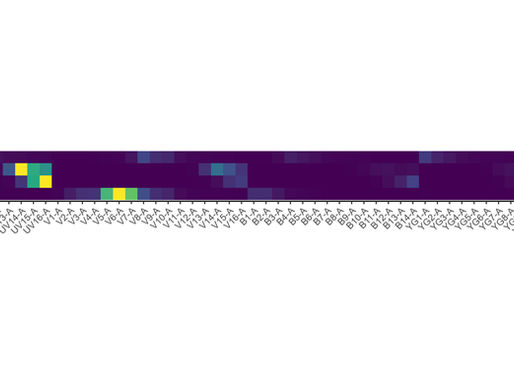top of page

Welcome to the blog
The content posted here is intended to help and is meant to be as accurate as possible. There will inevitably be mistakes or gaps in the knowledge. This is not peer-reviewed science, but is evidence-based as much as possible. If you see a factual inaccuracy or disagree, send in a correction to colibri.cytometry at gmail. Also, while some of this content tries to push the boundaries of what we know about how to do flow, it is not intended to claim invention credit. If you feel a reference has been overlooked, please let me know.
Commenting has been deactivated. Sorry.
The comments were getting spammed, also GDPR is a headache.


AutoSpectral: Full workflow example
A full workflow example for using AutoSpectral to perform spectral unmixing
5 days ago8 min read


AutoSpectral: ID7000 40C examples
Today, let's look at some 40-colour data from a 5-laser Sony ID7000, using AutoSpectral for the unmixing.
Oct 302 min read


AutoSpectral: OMIP-102 examples
What happens if we run AutoSpectral on a good dataset, with cell-based controls?
Oct 292 min read


Introducing AutoSpectral: an optimized unmixing workflow
With AutoSpectral, we provide an optimized, complete pipeline in R to make the best use of the information in the single-stained controls and reproducibly generate better unmixing.
Oct 283 min read


AutoSpectral: Per Cell Fluorophore Optimization
The aim of this article is to explain a bit more about how we go about optimizing the fluorophore signatures used for unmixing on a per-cell basis in AutoSpectral. Let me know if the explanation doesn't make sense.
Oct 279 min read


AutoSpectral: Single Cell Autofluorescence
The aim of this article is to show you how to use AutoSpectral’s per-cell autofluorescence (AF) extraction. This method selects the best AF signature to use for each cell (or point of debris, noise, whatever) in the data.
Oct 275 min read


AutoSpectral: plotting
In this article, let’s look at a couple of the functions that AutoSpectral offers for plotting your spectra and data. AutoSpectral isn't intended to replace flow analysis software like FlowJo or FCS Express, but it's essential to have some options for visualizing the outputs.
Oct 274 min read


AutoSpectral: reopening and rerunning
In this article, we'll cover some shortcuts to allow you to return to AutoSpectral once you've already run an experiment.
Oct 274 min read


AutoSpectral: cleaning
In this article, we’ll try to cover the functions that AutoSpectral offers for cleaning your single-stained control data.
Oct 277 min read


AutoSpectral: gating
In this article, we’ll try to cover some of the features and tuning for the automated gating in AutoSpectral.
Oct 277 min read


AutoSpectral: creating the control file
In this article, we’re going to cover how to create a control file, which is an essential first step in running AutoSpectral. The control file is a specifically formatted spreadsheet describing your single-stained control files.
Oct 275 min read


AutoSpectral: basic workflow
In this article, I'll cover the basic workflow for using AutoSpectral for unmixing spectral flow cytometry data.
Oct 272 min read


Spectral mixing matrix normalization
Should we normalize the fluorophore signatures to the peak or to the sum of all the signals?
Sep 223 min read


Why do we get autofluorescence problems?
Today the aim is to illustrate visually how cellular autofluorescence ends up in our unmixed flow cytometry data, confounding our results.
Sep 82 min read


What's an unmixing matrix?
In the last post, we looked at what the spectral mixing (sometimes called spillover) matrix looked like. Today, let's go through a bit about the unmixing matrix.
Aug 265 min read


Cookies...
In order to avoid any issues with GDPR or other internet laws, I'm taking a couple of less pleasant steps. First, you'll now see the...
Aug 241 min read


What's in a spectral matrix?
Today the plan is to try to explain what a spillover or spectral matrix is
Aug 117 min read


AutoSpill 2: Spectral Boogaloo
AutoSpectral is a new way of getting better unmixing.
Jun 301 min read


Stabilizing your unmixing: drift
Today's post is meant to illustrate why I do not recommend running new samples using the same unmixing matrix across multiple days.
May 122 min read


Stabilizing your unmixing
Today's post pulls from a lot of previous posts on this blog to show how to effectively eliminate batch effects in your flow from an experimental side. Stabilizing the unmixing is a big part of this.
Apr 285 min read
bottom of page




